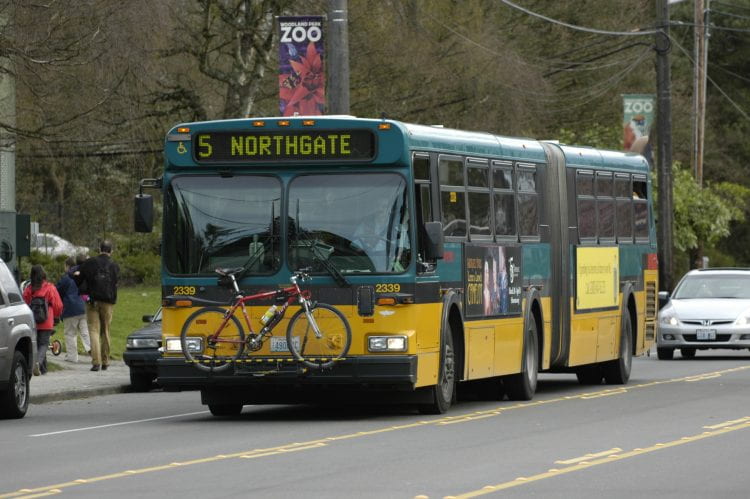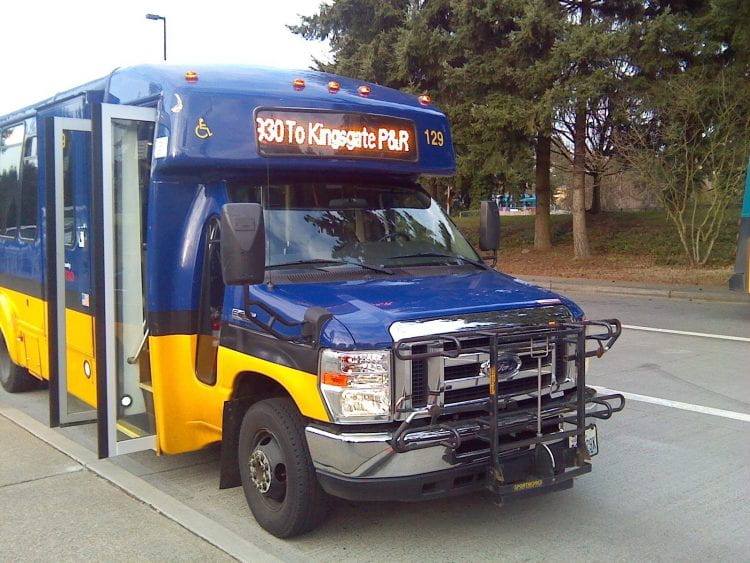November 9, 2016
Is Metro maximizing their resources?

Eric Barber
When riding the bus one night around 8:00 I realized that I was on a 60 foot articulated bus carrying just me and one other passenger. During rush hour I have been on these buses when they have been nearly full. However, it seemed odd to me that the same bus would still be used during a time that had much lower ridership. While sitting there I figured that these bigger buses must use up more energy and must cost more to maintain and buy. In 2004 King County metro spent 152 million dollars to purchase 235 new hybrid buses. Why then wouldn’t the city want to maximize the utility gained from the buses by saving them for times when ridership is high? This would reduce the amount of wear on the buses and extending their usable life.

by zoo’s old West Entrance on Phinney
I contacted some people at Metro to figure out why they weren’t using a system like this, and also what the fuel economy of some of their buses is. The first reason I was given as to why the buses were not being switched out for smaller vehicles was that by switching buses in and out, the city would have to buy more buses, maintain more buses, and have the space to store more buses, all of which lends to increased operating cost. The next reason I was given as to why this was not something metro pursues, is that by having to switch buses in and out, they would have to add time to schedule and there would also be added deadheading time, where the buses are not picking up riders. Furthermore, it is possible that I was on a part of a route that has low ridership and thus it only seemed to me to be empty.
However, because I now had the average fuel efficiency of the buses, I could now do a rough calculation on my own to determine if this indeed is not feasible like metro told me. When doing the calculations, I decided that I would focus on the route that I take to get to school. The route that I decided to look at is the 65 and the 67. The 65 and 67 are connected in that once the 65 route ends the 67 route begins on the same bus seamlessly. From end to end this route is 13.8 miles long. Additionally, Metro budgets $2.25 per gallon of diesel. Assuming this route uses the most common and efficient articulated New Flyer D60HF, with an average fuel economy of 3.6 mpg, 3.83 gallons of gas would be used. This would cost metro $8.62. When at one end of this route, this bus is located 2.1 miles away from the Northern Metro base. This would take 6 minutes to drive to, each way. To switch to a more fuel efficient, Ford E-350 shuttle bus with an average mpg rating of 12 mpg, we will assume that it takes about 3 minutes. The top rate that bus drivers make is $28.47 an hour, plus we will assume an additional 35% of this added on for benefits. Which means that for these 15 minutes, Metro would be spending $9.61 for the drivers time plus an additional $1.70 in fuel for that distance. In total this switch would cost $11.31. Once the diesel E-350 is in route, it would use 1.15 gallons of diesel for one trip on the route or $2.59. This means by switching out the bus for one route, it would save $6.03 each leg of the route after switching. After one leg of the route metro would be losing $5.01, however, if the bus does more than one leg it will begin to save money for metro. However, these values do not account for the Capital costs for metro to buy these shuttles and also the fixed costs to store them.

Moreover, these calculations don’t consider the extra benefits people would gain from not having loud buses buzzing in residential areas. For this route in particular from a purely fuel use stand point, I believe that it would be a good idea to switch out the articulated buses for smaller shuttle buses. However, when looking more into the cost of storage of these vehicles it might begin to be more expensive to implement something like this. In order to fully understand whether this is a good idea, a complete analysis of cost and benefits would have to be done for every route. With the introduction of automated buses, perhaps this model could become even more feasible because metro will no longer be paying for labor costs.
Recent Comments